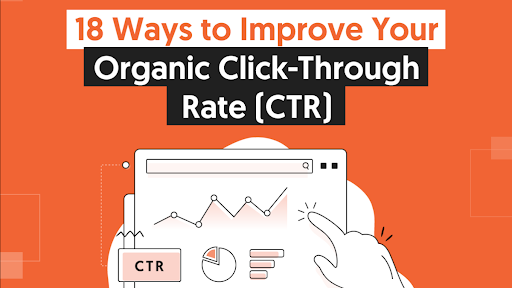How to Gauge the Influence of CTR Control on Your Advertising And Marketing
Comprehending the subtleties of click-through rate (CTR) control in advertising and marketing is important for organizations making every effort for genuine individual involvement. By checking out vital metrics such as conversion rates and bounce prices, marketing professionals can reveal possible inconsistencies that might arise from fabricated improvements. Utilizing devices like Google Analytics and executing A/B screening can provide understandings into the effectiveness of various approaches. However, the effects expand beyond prompt data; the long-term effects on brand name honesty and user count on warrant mindful consideration. What remains to be checked out is just how these aspects adjoin and affect general marketing success.
Comprehending CTR Manipulation
Recognizing CTR adjustment is crucial for marketers looking for to maximize their projects and make certain information honesty. Click-through price (CTR) refers to the proportion of individuals who click on a details link to the overall number of users who view the promotion or web content.
The implications of CTR adjustment expand past simple data distortion; they can undermine trust fund in digital advertising and marketing. When organizations rely upon filled with air metrics, they may spend in inefficient campaigns, inevitably damaging their roi. In addition, platforms may punish advertisers engaging in such techniques, bring about more ramifications for their marketing initiatives.
To effectively battle CTR adjustment, marketing experts need to establish a comprehensive understanding of their information resources and analytics devices. By using sophisticated tracking methods and looking at web traffic sources, they can ensure and recognize uneven patterns that their efficiency metrics show genuine customer interaction - CTR Manipulation. This caution is vital for promoting lasting success in an increasingly affordable digital landscape
Trick Metrics to Evaluate
Reliable analysis of crucial metrics is important for examining the real performance of advertising projects and finding possible CTR manipulation. One main statistics to consider is the Click-Through Rate (CTR) itself, which stands for the ratio of individuals that click an advertisement to the complete number of customers who see it. An abrupt spike in CTR may show adjustment, requiring additional investigation.
In addition, keeping track of conversion rates is essential. A high CTR with a reduced conversion rate might indicate that the clicks are not real or that the targeting is misaligned (CTR Manipulation Press Release). In a similar way, evaluating bounce rates can offer insight into individual engagement; a high bounce rate after a click may recommend that the website traffic is not quality-driven.

Devices for Measurement

Additionally, A/B screening devices such as Optimizely or VWO can facilitate testing with numerous ad variations to determine which aspects drive greater CTR. These devices permit marketers to assess real-time efficiency and make data-driven adjustments. Social network analytics devices, like Hootsuite visit the site or Sprout Social, can additionally be crucial in understanding CTR within social platforms, offering understandings right into target market actions and involvement patterns.
In addition, heat mapping tools, such as Hotjar, can reveal how customers engage with advertisements, aiding to recognize where renovations can be made. Incorporating these devices produces a robust measurement framework, enabling marketing professionals to determine the impacts of CTR adjustment properly. Inevitably, the ideal choice of measurement tools is vital for making educated advertising and marketing choices and maximizing campaign performance.

Evaluating Long-lasting Effects
One must think about the long-lasting results of CTR adjustment on overall advertising efficiency, as temporary gains can often mask deeper implications. Over time, synthetically blew up click-through prices might bring about lessened trust from consumers and online search engine alike. When individuals continuously run into deceitful techniques, they might become reluctant to involve with the brand name, causing reduced conversion rates in the future.
Furthermore, algorithm updates from platforms such as Google are designed to prioritize genuine involvement over filled with air metrics. Organizations that count on CTR control might locate themselves penalized, leading to a decrease in natural reach and exposure. This can have a cascading result on brand name reliability and customer loyalty, inevitably undermining the really goals that the preliminary adjustment sought to achieve.
Additionally, the information collected from controlled CTR may misguide marketers in their method advancement. Counting on manipulated information can lead to illinformed campaigns that fall short to resonate with the target audience, bring about wasted resources and missed chances. It is vital for marketing experts to evaluate the long-lasting implications of CTR control and focus on lasting, moral involvement approaches for lasting success.
Moral Considerations in CTR Manipulation
In the world of digital look these up marketing, honest considerations bordering CTR manipulation are extremely important. While the wish to enhance click-through rates (CTR) can lead to short-term gains, the prospective lasting effects on brand name integrity and consumer trust can not be neglected.
In addition, ethical issues reach conformity with laws such as the Federal Profession Compensation (FTC) guidelines, which mandate openness in advertising. Falling short to stick to these criteria can subject companies to legal ramifications and harm their reputation. Marketers must take into consideration the effects of their techniques on individual experience and the wider market landscape.
Additionally, the increase of synthetic knowledge and automation in marketing presents more honest dilemmas. Eventually, moral advertising and marketing methods should prioritize openness, honesty, and regard for the consumer, fostering long-lasting relationships that go beyond simple metrics like CTR.
Conclusion
Finally, measuring the impact of CTR control on advertising and marketing requires a detailed analysis of key metrics, consisting of click-through prices, conversion prices, and bounce rates. Utilizing analytics tools and carrying out A/B screening can supply important understandings into customer interaction and website traffic quality. Additionally, analyzing long-lasting effects and adhering to moral considerations is important for notified decision-making. Eventually, a data-driven method makes sure that marketing approaches work and aligned with genuine customer interactions.
Comprehending the nuances of click-through rate Recommended Site (CTR) manipulation in marketing is important for services striving for genuine individual interaction.Effective analysis of crucial metrics is important for reviewing the true performance of advertising campaigns and detecting potential CTR adjustment.One need to think about the long-lasting impacts of CTR adjustment on general advertising performance, as temporary gains can commonly mask much deeper ramifications.In the world of digital advertising and marketing, honest considerations bordering CTR manipulation are critical.In conclusion, measuring the influence of CTR adjustment on marketing calls for a detailed analysis of key metrics, including click-through prices, conversion prices, and bounce prices.